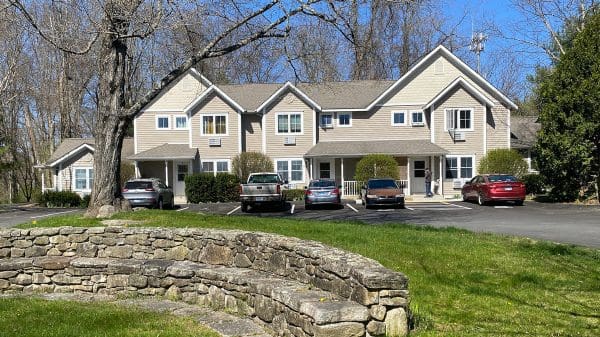KENT—Swift House was the subject of some contentious discussion during a recent Board of Selectmen meeting. The ancient building, once thought to be the oldest in town, is owned by the town but is currently not used for municipal purposes because it is not code compliant.
Swift House Task Force Chairman Zanne Charity met with the Board of Selectman via Zoom Dec. 11 to argue that a joint meeting of the selectmen and the task force “is critical to determine the objectives of the town for use of the building.” She pressed for a meeting in late January or early February.
“We need a meeting with the selectmen to go through the results of the survey we did last year,” she said. “There were a number of suggestions made and we would love to have you add your ideas. The architects can’t come and do effective work for us until we give them a plan.”
First Selectman Marty Lindenmayer seemed impatient. He said the architects have to come “and look at the bones of the building and tell us what is possible. Then we can decide, based on their report, what it will cost.”
Charity was tenacious in her position that the town must tell the architects first what the town wants.
“It’s really not productive to have a meeting with an architect about a project, walk through and look at the premises, without being prepared to guide them as to what we want to use,” she said. “We want a full discussion of potential uses and priorities. If they are not thinking about how we want to use it, because we haven’t given them guidelines, they are at loose ends.”
Because she is going away, Charity wanted to delay a meeting until her return.
Lindenmayer dismissed the thought of more delay. “You have an RFP,” he said, “You’ve changed it two or three times. I think we have enough. You’ve given us plenty of guidance. I think it’s time we actually get moving. Any more delay is just another delay.”
Charity held that there has never been a direct conversation with the Board of Selectmen. “Why are we rushing so much,” she asked.
She said that she did not know if the contract with the architectural firm Silver Petrucelli & Associates includes a provision for cost estimates. There might be additional costs and she was not sure the money was in the Swift House budget, she said.
“I would hate to see it stay closed for another four years because we don’t have funds for an ADA bathroom,” she stated. “Once the plan is approved with an estimated cost, the next step would be to get working plans and specs to go to contractors. It will be costly and time-consuming.”
“We have been working on this for some time and for the first time we have some movement,” said Selectman Glenn Sanchez, who also serves on the task force. “We have an action plan from ’21 and here’s our plan from ’23. I would love to get this thing going.”
To Charity’s contention that priorities have never been established, Sanchez said, “We know we need to be ADA compliant to get human beings back in there. At the basic minimum, we need to know those costs.”
“The first step has to be accessibility—there can be more stages later,” agreed Selectman Lynn Mellis Worthington, a champion of the old building.
But Charity argued that the placement of those facilities will inform how the rest of the building can be used. “You can’t plan for the entrance and bathroom without knowing the full picture,” she said.
“It’s the people’s check,” said Lindenmayer sharply. “We have some ideas to move forward. Then we have to figure out what the town can afford. There’s no way we want to cut out the task force, but we still have to move forward. Encourage [the architects] to put their team together. We don’t want to delay any longer. We’re not going to delay to meet your schedules.”
He asserted that the task force is an advisory board and is “not to take charge of the architect.”
The issue may have been made moot by the subsequent discussion of the capital plan. In an attempt to reduce spending between 2024 and 2029, a number of items in the plan were moved into future years. Swift House funding was among them.
Lindenmayer said he was not sure about maintaining the building “as a cultural entity” and said no specific use had been designated for the Swift House funding.
“I want to make sure it is useful,” he said. “We need to be careful how we allocate.”
Worthington argued strongly for keeping the money in the current five-year plan. “If you cut this money, you are sending the message that it is not important,” she said.
Lindenmayer wondered why Swift House is important and Worthington replied, “Because it is part of our history.”
Eventually the board compromised, keeping $150,000 for Swift House in 2029 and moving the rest into 2030.






























